Curtain Call Memories Part 1: London Palladium Stories
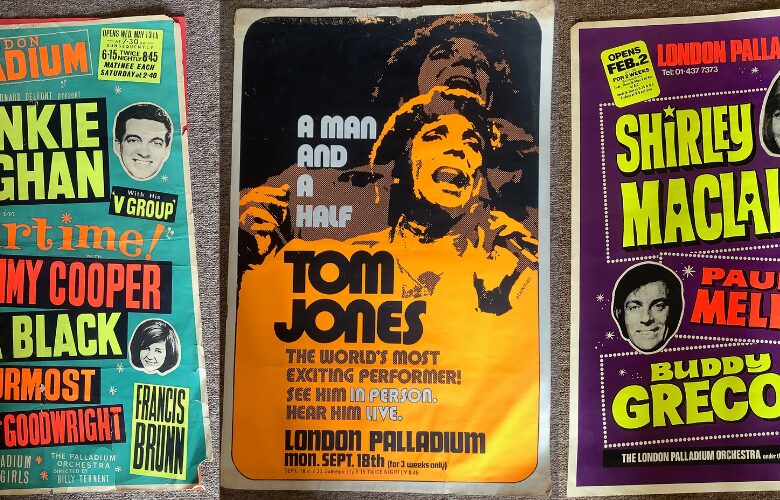
Stories and Treasures from the Stage
Reflecting on a career that has spanned several decades in the ever-evolving world of theatre. As a seasoned stage manager and showcaller, I had the privilege of working at the iconic London Palladium during a time when it was the epicentre of excellence in the art of Variety, the British equivalent of Vaudeville. My experience with the production of Barnum in 1981 was not just a job; it was the continuation of the entertainment that defined the Palladium’s legacy. In this article I reflect on that time, the people who formed them and the magical atmosphere of the Palladium.
I worked at the London Palladium in 1981 on a production of Barnum with Michael Crawford. It was already running in New York with Jim Dale and this was the London version. I was stage manager / showcaller. There were only two of us in rehearsal- myself and Tim Devereux who looked after the Circus kit. Now, there would be at least six people doing the same job.
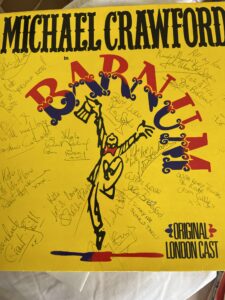
 There was a tricky opening with previews cancelled as Michael struggled with anxiety and the feedback from the American Producers. He needn’t have worried. It was a big success. When we did open I will never forget his running onto the stage and the audience spontaneously erupting into applause. Michael had charisma – you couldn’t define it.
There was a tricky opening with previews cancelled as Michael struggled with anxiety and the feedback from the American Producers. He needn’t have worried. It was a big success. When we did open I will never forget his running onto the stage and the audience spontaneously erupting into applause. Michael had charisma – you couldn’t define it.
The Palladium is the most famous theatre in London for its history of top class variety in the days when Variety was much more highly regarded than now. Today we are used to comedy performers doing arena tours and making a fortune. Then, the Palladium was the pinnacle for a performer to aspire to. Witness Sammy Davis, Frank Sinatra, Judy Garland, Abbott & Costello, Bob Hope. English comedians at the top of their game. Tommy Cooper, Ken Dodd, Tony Hancock. English pop singers. Cilla Black, Dusty Springfield. US stars Louis Armstrong, Dean Martin, Jerry Lewis.
There was a popular TV Variety show filmed there called Sunday Night at the London Palladium hosted by Bruce Forsyth, who in late life became the host of Strictly Come Dancing, and famously hated using autocue, much to the annoyance of the producers as they couldn’t keep him to time or have control of cue lines. His ashes are buried under the theatre he loved. There was a game show element and then always a performer at ‘the top of the bill’. The show always ended with the famous revolve slowly turning with all the artists waving goodbye. They put on a star studded pantomime every year which ran long after Christmas was over and Easter was approaching.
The Royal Variety show ran there for many years. It was usually very long! I feel sure the Queen would have preferred to be at a horse show.
From Spectator to Maker of the Magic
As a child my parents would take us to see shows when we travelled to London to start a holiday abroad. The Palladium was the grand highlight. I remember telling my dad that Cilla Black had been looking straight at me. “That’s the skill of a great performer”, he replied.
So, when I worked there I was walking into history. You stand centre stage and the whole auditorium feels close to you. Despite seating nearly 2,300. Designed by Frank Matcham. There is something magical about the connection between stage and audience.
In those days there was a permanent in-house crew of around 6 who were almost as well known as the theatre. By reputation the ‘Linford’ was the best follow spot operator in the business. The front of the spot always touching the toes of the performer.
Before the theatre was taken over by a West End producer these crew were able to work directly with the artists to sort out what worked for them with lighting and sound. Nowadays you have to fight your way through minders who insist on asking the questions for you – like Chinese whispers never being asked in the right way because they don’t understand your world.
I met my partner, Julian Williams here. He worked in Lighting. Had been there since he was in his very early twenties. He was there when Judy Garland introduced Liza Minelli to the world in 1964. He was there when the Beatles played their first Sunday Night at the London Palladium in 1964. The crew were baffled by the screaming girls outside the stage door and worried about their falling over the balcony as they leaned towards their heroes. After he passed away I found autograph books with all the Beatles signatures, signed photos of Liza Minnelli, Sammy Davis. I still have his follow spot plot from the Beatles set – ‘very bright on lead boy’
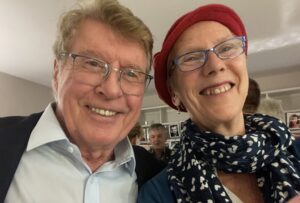
After the performance of Barnum I would sometimes stand on the stage surrounded by the finale confetti and breathe in the energy lingering in the air from the show just finished and the ghostly presence of those unique performers.
If you had time to walk along the FOH corridors there were many photographs of past performers, historical concerts.
A couple of years ago I worked on a one day event there. The prompt corner still felt the same. The feeling of sitting there calling the show came flooding back.
TV changed the nature of live Variety. Despite the nature of the shows at the Palladium now being way more commercial you can’t take away the sheer class it represents.
The history of this lovely building can’t be diminished nor my memory of my time there.
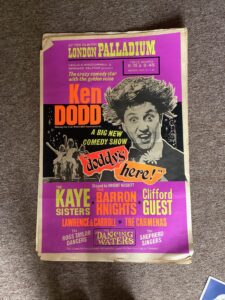
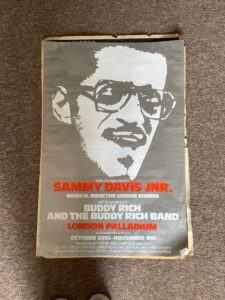

Original posters from the London Palladium from Kate’s collection (above)
Conclusion
The passage of time has undoubtedly transformed the landscape of live performance, but the essence of the London Palladium remains untarnished in my memory. Though the world has moved towards a more commercial and technologically driven era, the spirit of that grand theatre—where legendary performers once stood and where history was made—continues to resonate. My time at the Palladium, surrounded by the echoes of past glories and the vibrant energy of live performance, serves as a poignant reminder of the enduring allure of the theatre. It is a testament to the timeless connection between stage and audience, and to the indelible mark that such iconic venues leave on those who have been fortunate enough to experience their magic.
Learn more about the London Palladium here.
All photos provided by Kate Salberg
Editor's Note: At StageLync, an international platform for the performing arts, we celebrate the diversity of our writers' backgrounds. We recognize and support their choice to use either American or British English in their articles, respecting their individual preferences and origins. This policy allows us to embrace a wide range of linguistic expressions, enriching our content and reflecting the global nature of our community.
🎧 Join us on the StageLync Podcast for inspiring stories from the world of performing arts! Tune in to hear from the creative minds who bring magic to life, both onstage and behind the scenes. 🎙️ 👉 Listen now!